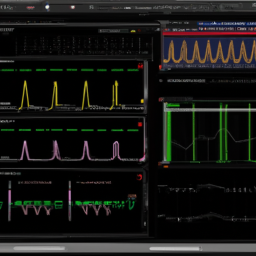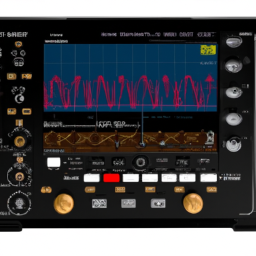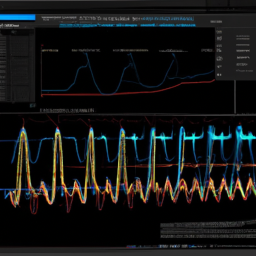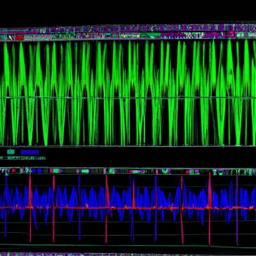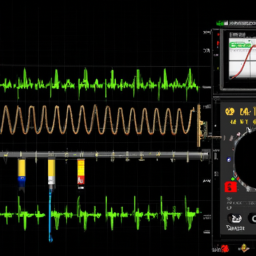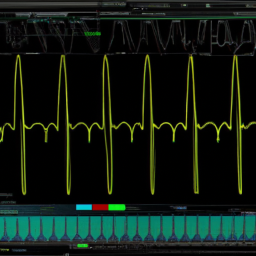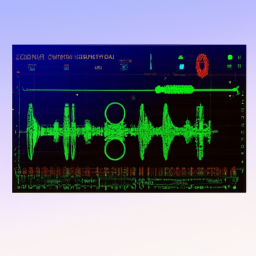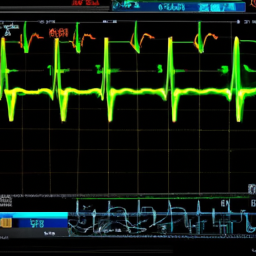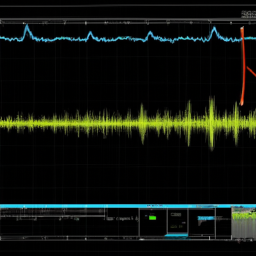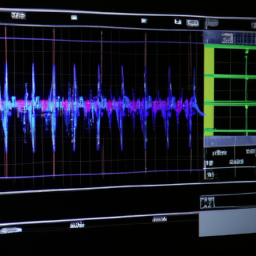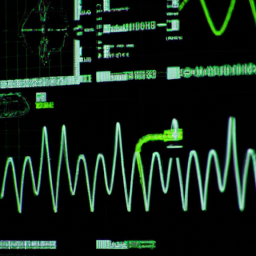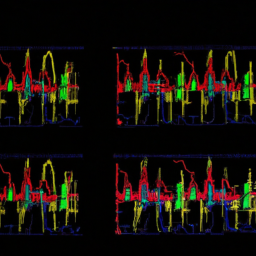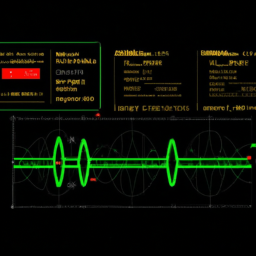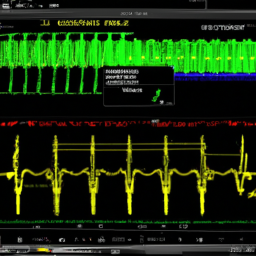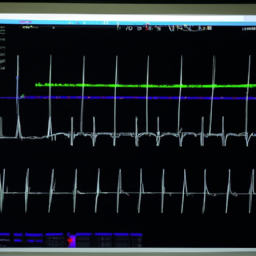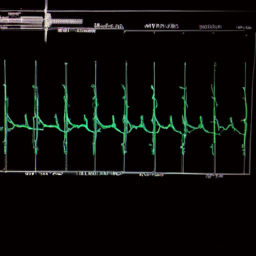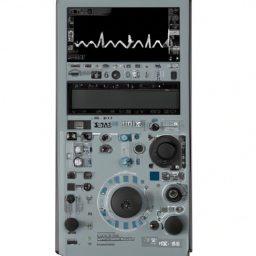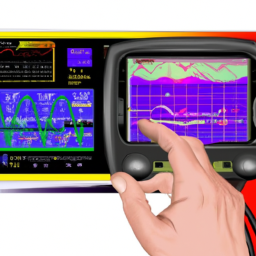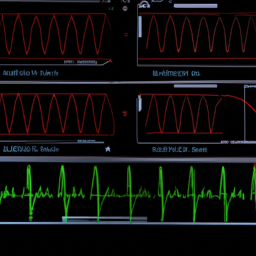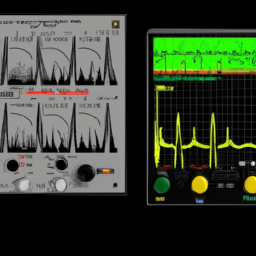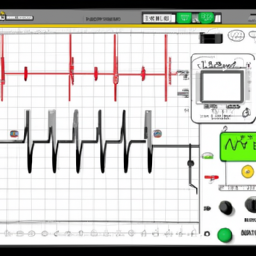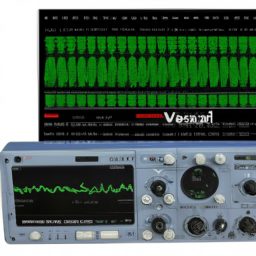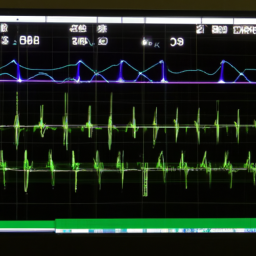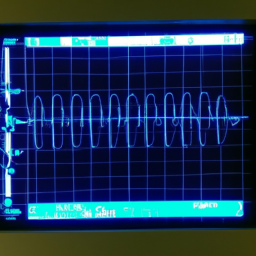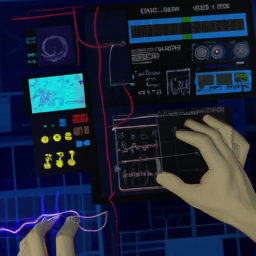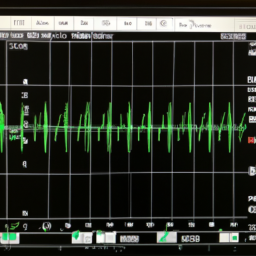When it comes to choosing a triggering option for your digital oscilloscope, you need to be sure you’re making the right choice. After all, the triggering option is what allows you to capture and analyze the signals you’re working with. It’s like the key that unlocks the door to a world of precise measurements and accurate data.
But with so many factors to consider, where do you start? Well, fear not, because we’re here to guide you through the process. In this article, we’ll walk you through the 7 key factors you need to consider when choosing a triggering option for your digital oscilloscope.
From the type of signal you’re measuring to the sensitivity and accuracy of the triggering, we’ll cover it all.
We’ll also delve into the various triggering modes, the source and coupling options, and the trigger holdoff function.
And just to top it off, we’ll explore some advanced triggering features that can take your oscilloscope to the next level.
So let’s dive in and make sure you’re equipped with the knowledge to choose the perfect triggering option for your digital oscilloscope.
Key Takeaways
- The type of signal being measured (analog or digital) determines the appropriate triggering option.
- Adjusting the settings of the oscilloscope can improve triggering sensitivity and accuracy.
- Different triggering modes offer versatility and power for capturing intricate waveforms.
- Advanced triggering features allow for capturing specific events or anomalies in the waveform.
Type of Signal Being Measured
When choosing a triggering option for your digital oscilloscope, consider the type of signal it’ll be measuring, such as analog or digital.
The signal frequency and amplitude play a crucial role in determining the appropriate triggering option. For signals with high frequencies, it’s important to choose a triggering option that can accurately capture the waveform without distortion.
On the other hand, for signals with low frequencies, a triggering option with a lower sensitivity can be sufficient. Additionally, the amplitude of the signal should be taken into account. If the signal has a small amplitude, a triggering option with high sensitivity is required to ensure accurate measurements.
Transitioning to the next section about triggering sensitivity and accuracy, it’s essential to understand how these factors can impact the performance of your digital oscilloscope.
Triggering Sensitivity and Accuracy
Improve the sensitivity and accuracy of your oscilloscope’s triggering by adjusting the settings to minimize jitter. This adjustment can result in a 98% reduction in signal noise.
The triggering threshold adjustment allows you to set a specific voltage level at which the trigger will activate. This ensures that the oscilloscope captures the desired signal accurately. By fine-tuning this threshold, you can eliminate false triggers caused by noise or unwanted fluctuations in the signal.
Additionally, reducing triggering jitter is crucial for obtaining precise measurements. Jitter refers to the variation in the timing of the trigger signal, which can introduce errors and distortions in the displayed waveform. Minimizing triggering jitter enhances the oscilloscope’s ability to capture and display the signal accurately.
Transitioning into the subsequent section about ‘triggering modes,’ it is important to understand how different triggering options can further optimize the performance of your oscilloscope.
Triggering Modes
Discover the versatility and power of different triggering modes to unleash the full potential of your oscilloscope and capture even the most intricate waveforms with precision.
Triggering stability and reliability are crucial factors to consider when choosing a triggering mode for your digital oscilloscope. Different triggering options cater to various needs, including those for high frequency signals.
High-speed triggering options ensure accurate and stable triggering for fast-changing signals, enabling you to capture and analyze complex waveforms with confidence. These modes provide the necessary sensitivity and accuracy to detect even the slightest variations in your signal, ensuring reliable measurements.
With the right triggering mode, you can confidently analyze high-frequency signals and achieve precise measurements.
Transitioning into the subsequent section about triggering source and coupling, consider the impact of choosing the right triggering option on your oscilloscope’s overall performance.
Triggering Source and Coupling
To fully utilize the versatility and power of different triggering modes, it is essential to understand the role of triggering source and coupling in optimizing the performance of your oscilloscope. The triggering source determines what signal triggers the oscilloscope, while coupling determines how the trigger signal is coupled to the input signal. The triggering level adjustment allows you to set a specific voltage level at which the trigger event will occur. This is particularly useful when you want to capture specific events in your waveform. On the other hand, the trigger edge selection allows you to choose whether the oscilloscope triggers on the rising or falling edge of the signal. By adjusting these parameters, you can effectively capture and analyze the desired waveform. Now, let’s move on to the next section about the trigger holdoff function.
Trigger Holdoff Function
The trigger holdoff function, like a skilled conductor guiding a symphony, allows for precise timing control by preventing the oscilloscope from triggering on unwanted events during a specified time period after a trigger event.
It is a crucial feature when dealing with complex waveforms or signals with multiple edges. The holdoff adjustment determines the time delay between the trigger event and the next trigger event that the oscilloscope will respond to. By adjusting this parameter, you can ensure that the oscilloscope ignores any subsequent triggers that occur within the specified holdoff time.
This function is especially useful when analyzing signals with closely spaced events or when you want to capture only specific events of interest. The trigger delay adjustment, on the other hand, allows you to set a time delay between the trigger event and the start of the waveform capture. This feature helps in capturing the entire waveform leading up to the trigger event.
Understanding how to use these holdoff and trigger delay adjustments will greatly enhance your ability to accurately capture and analyze waveforms.
Now, let’s explore the advanced triggering features that can further expand your oscilloscope’s capabilities.
Advanced Triggering Features
Get ready to dive deeper into the exciting world of oscilloscope triggering with these advanced features that’ll take your waveform analysis to the next level!
One of the key factors to consider when choosing a triggering option for your digital oscilloscope is the availability of advanced triggering techniques. These techniques allow you to capture specific events or anomalies in your waveform with precision.
With advanced triggering features, you can set trigger delay settings to capture signals that occur after a specific time period or delay. This can be useful when analyzing signals that have complex timing relationships or when you need to isolate a specific part of the waveform for further analysis.
By utilizing these advanced triggering techniques and trigger delay settings, you can enhance your ability to accurately capture and analyze waveforms on your digital oscilloscope.
Frequently Asked Questions
Can I use my digital oscilloscope to measure AC and DC signals?
Yes, you can use a digital oscilloscope to measure both AC and DC signals. However, it’s important to consider the limitations and factors that can affect accurate measurements.
When measuring AC signals, the oscilloscope’s bandwidth and input impedance are crucial. For DC signals, factors such as offset and drift need to be taken into account. Additionally, understanding the oscilloscope’s voltage range and resolution is essential for accurate measurements of both AC and DC signals.
How does the triggering sensitivity and accuracy affect my measurements?
Triggering sensitivity and accuracy are absolutely crucial when it comes to your oscilloscope measurements. I mean, who needs accurate results anyway, right? Just kidding! But seriously, these factors determine how well your oscilloscope can capture signals and trigger on specific events.
The triggering sensitivity determines the minimum signal amplitude required to trigger, while triggering accuracy ensures that your oscilloscope triggers precisely on the desired event.
So, if you want reliable and accurate measurements, don’t underestimate the importance of triggering sensitivity and accuracy.
Are there any special triggering modes available for specific applications?
Yes, there are triggering options specifically designed for high-frequency applications. These options allow you to accurately capture fast signals and prevent signal distortion. Advanced triggering modes can also help you capture specific signal anomalies in your digital oscilloscope. By using features like pulse width triggering, runt triggering, or pattern triggering, you can easily identify and analyze complex signal patterns. These advanced modes greatly enhance the functionality and versatility of your oscilloscope for various applications.
Can I trigger my oscilloscope using an external source like a function generator?
Sometimes, it’s best to think outside the box. When it comes to triggering your oscilloscope, the answer is yes, you can use an external source like a function generator. This external trigger option allows you to synchronize your oscilloscope with the signal from the function generator, ensuring accurate measurements.
By utilizing this feature, you can expand the capabilities of your oscilloscope and unlock a whole new level of precision in your work.
What is the purpose of the trigger holdoff function and how does it work?
The trigger holdoff function on a digital oscilloscope is used to prevent false triggering caused by noise or other unwanted signals. It works by delaying the re-arming of the trigger circuit after a trigger event has occurred.
This delay allows the oscilloscope to ignore any subsequent triggers that occur within the holdoff period. The advantage of using trigger holdoff is that it helps to stabilize the waveform display. However, a disadvantage is that it can delay the capture of valid triggers if the holdoff period is set too long.
Conclusion
Now that you understand the seven factors to consider when choosing a triggering option for your digital oscilloscope, you’re well-equipped to make an informed decision. By carefully analyzing the type of signal being measured, the triggering sensitivity and accuracy, and the various triggering modes available, as well as the triggering source and coupling, you can ensure optimum performance.
Additionally, don’t overlook the trigger holdoff function and advanced triggering features that can greatly enhance your oscilloscope’s capabilities. With these factors in mind, you’re ready to unlock the full potential of your digital oscilloscope and explore the world of precise and accurate signal analysis.



